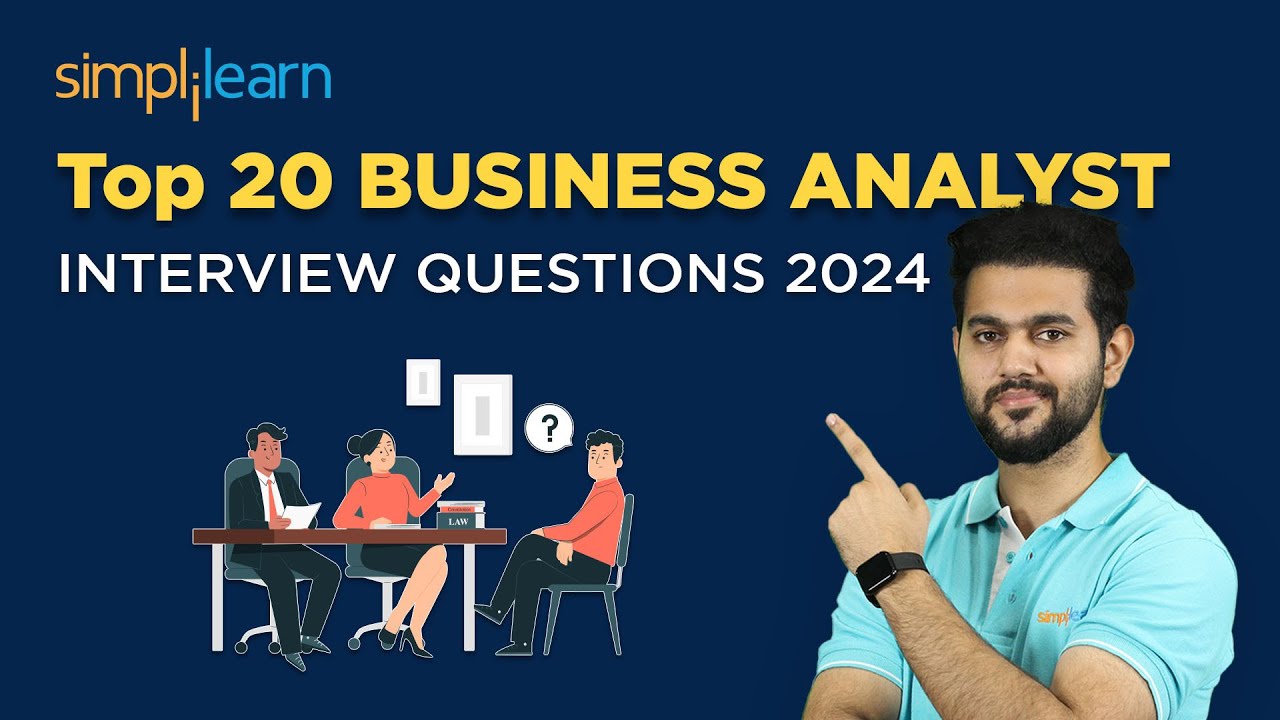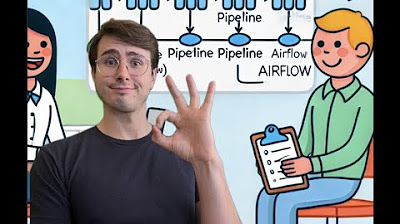Business Analyst Interview Questions and Answers | Business Analyst Interview Preparation
Summary
TLDRThis video script serves as a comprehensive guide for aspiring business analysts preparing for job interviews. It categorizes potential interview questions into basic, technical, and role-specific sections, covering topics like the BA's role, key skills, and tools. The script also addresses differences between business analysis and analytics, the importance of communication, and the BA's involvement in the project lifecycle. It advises on showcasing expertise and tailoring responses to impress interviewers, emphasizing the significance of a BA's contribution to organizational growth.
Takeaways
- 😀 The video aims to prepare viewers for a business analyst interview by discussing common questions and how to answer them.
- 🔍 The script categorizes interview questions into three sections: basic, technical, and role-specific business analyst questions.
- 👩💼 Basic questions cover the definition and roles of a business analyst, key responsibilities, and essential skills.
- 💡 Technical questions delve into the tools a business analyst should know, such as SQL, and concepts like UML and BPMN.
- 📊 Role-specific questions explore the business analyst's involvement in projects, handling changes, and dealing with stakeholders.
- 🛠️ The importance of communication skills for a business analyst is emphasized, as they interact with various stakeholders and departments.
- 📈 The script highlights the difference between business analysis and business analytics, focusing on processes versus data analysis.
- 🧩 The video suggests that a business analyst should have a good grasp of various techniques and methodologies, such as SWOT analysis and gap analysis.
- 📝 It's crucial for a business analyst to understand the software development lifecycle (SDLC) and different software methodologies.
- 🌟 The video concludes by encouraging viewers to prepare for their interviews, highlighting the importance of a strong resume and potential certification.
- 📢 Invensis Learning is promoted as a resource for certification training courses in business analysis.
Q & A
What is the primary role of a Business Analyst?
-A Business Analyst serves as a bridge between stakeholders and the IT department, ensuring that the needs of the business are met through effective communication and problem-solving.
What are some key responsibilities of a Business Analyst?
-Key responsibilities include understanding business problems, analyzing requirements, driving changes through IT solutions, and facilitating collaboration with stakeholders.
What skills are essential for a Business Analyst?
-Essential skills for a Business Analyst include strong communication, analytical abilities, collaboration, leadership qualities, decision-making skills, and creative thinking.
How does Business Analysis differ from Business Analytics?
-Business Analysis focuses on functions and processes, often involving process and enterprise architecture, while Business Analytics is data-driven, involving past performance investigation and information search.
What tools are commonly used by Business Analysts?
-Common tools used by Business Analysts include Google Docs, SQL, Adobe, Trello, Balsamic, Microsoft Office Suite, Jira, Rike, and Python.
Why is excellent communication skills necessary for a Business Analyst?
-Excellent communication skills are necessary for a Business Analyst to effectively interact with stakeholders, clients, and various departments, ensuring that all parties understand the project requirements and outcomes.
What are the steps involved in the Business Analysis process flow?
-The Business Analysis process flow includes information gathering, defining the scope, creating a business analysis plan, defining detailed requirements, implementation, and accessing the value created by the project.
What is Business Process Modeling and why is it important?
-Business Process Modeling is a graphical representation of a company's business processes or workflows. It is important for mapping the current state of processes and planning for future states without immediate changes, using techniques like flowcharts and data flow diagrams.
What is the difference between a Business Analyst and a Data Analyst?
-A Business Analyst focuses on analyzing and deriving solutions from data to meet business requirements, while a Data Analyst provides competitive analysis and identifies business or marketing trends. Business Analysts are involved in defining project goals and requirements, whereas Data Analysts have a more predictive and perspective approach.
Why should a Business Analyst have technical knowledge?
-A Business Analyst should have technical knowledge to effectively deal with tools and technologies, analyze problems, and communicate with technical stakeholders. This understanding is crucial for conceptualizing and implementing solutions.
What is the Unified Modeling Language (UML) and its significance for Business Analysts?
-UML is a standard language for specifying, visualizing, constructing, and documenting software and non-software systems. It is significant for Business Analysts as it helps in creating diagrams and models that facilitate the understanding of system requirements and design.
Outlines

Dieser Bereich ist nur für Premium-Benutzer verfügbar. Bitte führen Sie ein Upgrade durch, um auf diesen Abschnitt zuzugreifen.
Upgrade durchführenMindmap

Dieser Bereich ist nur für Premium-Benutzer verfügbar. Bitte führen Sie ein Upgrade durch, um auf diesen Abschnitt zuzugreifen.
Upgrade durchführenKeywords

Dieser Bereich ist nur für Premium-Benutzer verfügbar. Bitte führen Sie ein Upgrade durch, um auf diesen Abschnitt zuzugreifen.
Upgrade durchführenHighlights

Dieser Bereich ist nur für Premium-Benutzer verfügbar. Bitte führen Sie ein Upgrade durch, um auf diesen Abschnitt zuzugreifen.
Upgrade durchführenTranscripts

Dieser Bereich ist nur für Premium-Benutzer verfügbar. Bitte führen Sie ein Upgrade durch, um auf diesen Abschnitt zuzugreifen.
Upgrade durchführenWeitere ähnliche Videos ansehen

Business Analyst Interview Questions & Answers | Business Analyst Interview Preparation | Edureka

Top 20 BUSINESS ANALYST INTERVIEW QUESTIONS And ANSWERS 2024 | Simplilearn #businessAnalyst #QnA

YG MAU KERJA di KAPAL PESIAR MERAPAT!! LATIHAN INTERVIEW BAHASA INGGRIS DIKAPAL PESIAR / cruise line

English Job Interview

If I Wanted to Become a Software Engineer in 2025, This is What I’d Do [FULL BLUEPRINT]

Data Engineering Interview Guide! How to Get a Data Engineering Job!
5.0 / 5 (0 votes)
